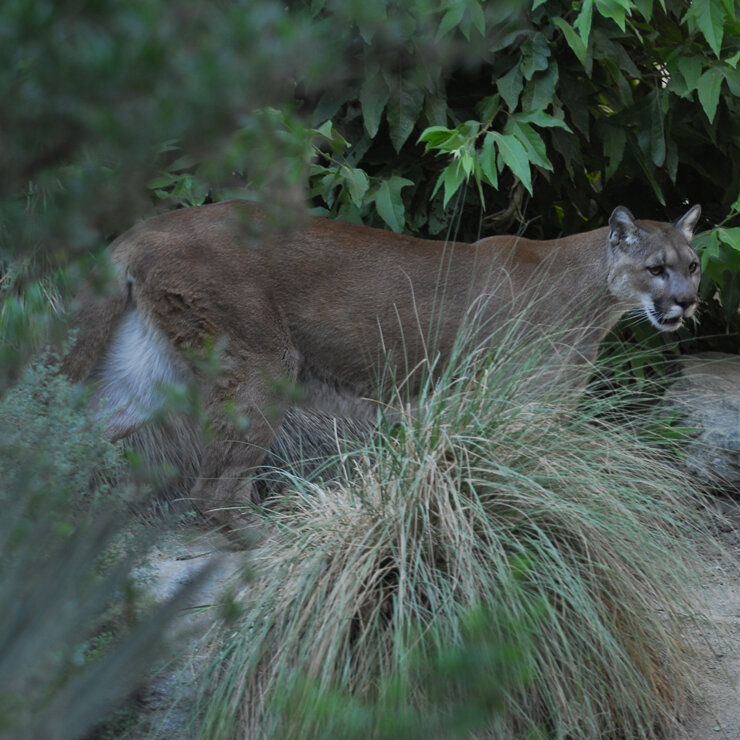Mountain Lion (Cougar)
Puma concolor
Mountain lions are relatively common in coniferous forests and chaparral-covered foothills, yet seldom seen. They are top predators. Mountain lions are solitary animals, with the exception of 1 to 6 days of associations during mating and periods of juvenile dependence.
Family:
Felidae (cat)
Description:
Mountain lions are large, slender cats. The pelt has a short and coarse texture. The general coloration ranges from a yellowish brown to grayish brown on the upper parts and a paler, almost buffy, color on the belly. Adult cougars range from 6 to 8 feet long, tail 2 to 3 feet long, covered with short hairs; weighs 60 to 260 pounds; stands 2 to 2 1/2 feet at the shoulder.
Habitat:
Mountain lions use a wide variety of habitats including montane coniferous forests, lowland tropical forests, grassland, dry brush country, swamps, and any areas with adequate cover and prey. Dense vegetation, caves, and rocky crevices provide shelter.
Range:
Historically, mountain lions had the most extensive distribution of all American terrestrial mammals. They ranged from coast to coast in North America, and from southern Argentina and Chile to southeastern Alaska. Extermination efforts, hunting pressure, and habitat destruction have restricted their range to relatively mountainous, unpopulated areas throughout much of their range. Populations in eastern North America were entirely exterminated, except for a small population of Florida panthers (Puma concolor coryi).
Diet:
Mountain lions are carnivores. Their main prey throughout their range are different species of ungulates, including moose, elk, white-tailed deer, mule deer, and caribou in North America. They will also eat smaller animals like squirrels, muskrat, porcupine, beaver, raccoon, striped skunk, coyote, bobcats, rabbits, opossums, birds, and even snails and fish.
Breeding:
Males maintain territories that overlap with those of several females. They attempt to dominate matings with those females. A mountain lion in the wild will not mate until it has established a home territory. When the female is in estrous, she vocalizes freely and frequently rubs against nearby objects. The male responds with similar yowls and sniffs the female's genital area. The highest frequency of copulation was nine times in one hour. A single copulatory act lasts less than one minute. Gestation periods last from 82 to 96 days. Litters vary in size from 1 to 6 cubs with an average of 3 or 4. Birth weight is between ½ to 1 pound. The cubs open their eyes 10 days after birth.
mtm 3-3-21/ok
Photo courtesy of The Living Desert Gardens and Zoo


